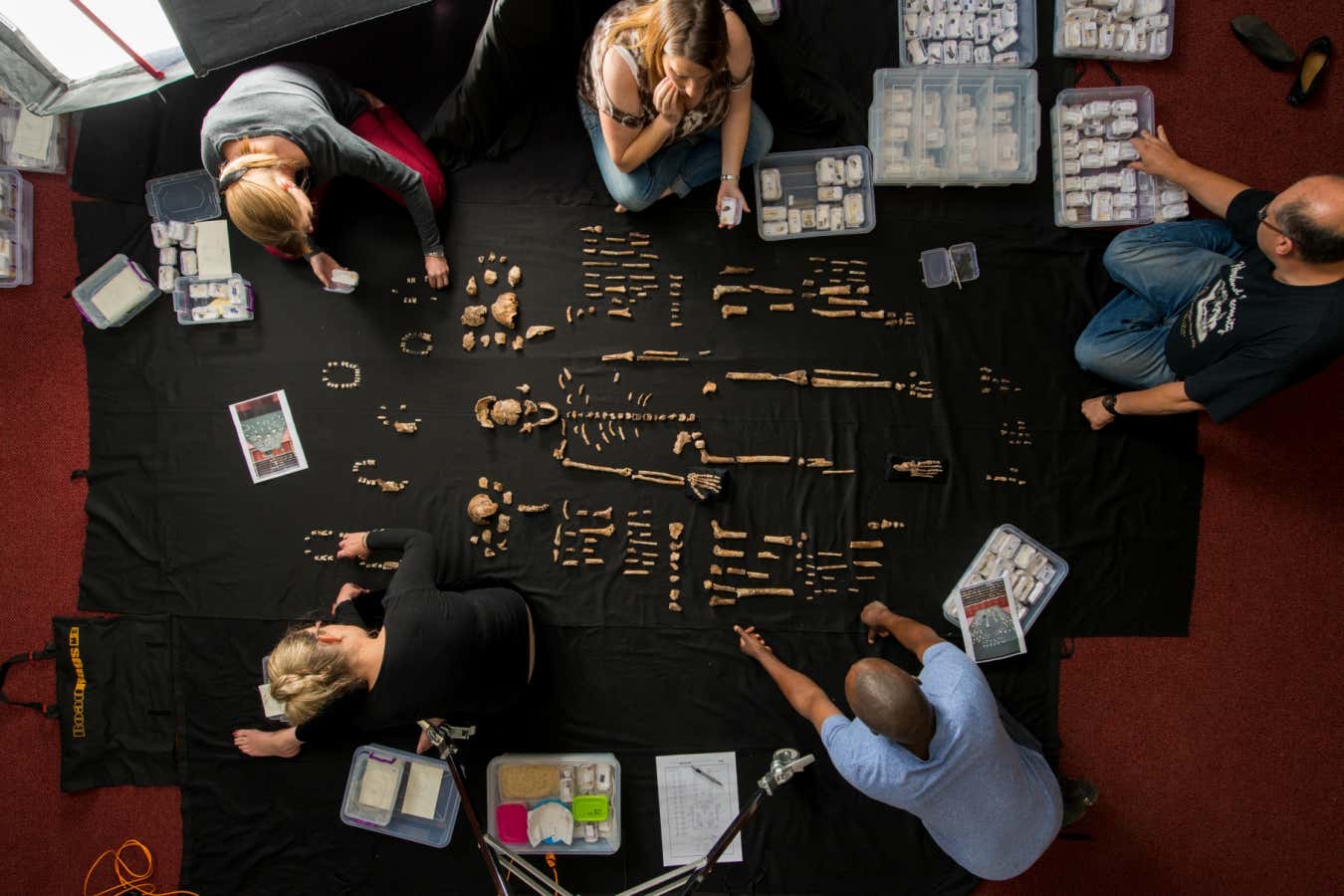A recent study suggests that Homo naledi, an ancient human species with a brain the size of a chimpanzee’s, may have engaged in complex behaviors such as etching symbols on cave walls and burying their dead. This challenges previous assumptions that these behaviors were exclusive to large-brained humans like Homo sapiens.
Homo naledi was first discovered in 2013 in the Rising Star cave system in South Africa. The fossils found belonged to a unique species with a height of about 144 centimeters and a brain size one-third of ours. The exact position of Homo naledi in the human family tree is still unknown, but its features suggest a common ancestor with Neanderthals and modern humans dating back over a million years. Fossil dating from 2017 indicates that Homo naledi lived relatively recently, between 335,000 and 241,000 years ago.
In 2021, an infant skull was found in a narrow fissure within the cave system, suggesting deliberate burial practices. This finding also implies that Homo naledi must have had the ability to control fire to navigate through dark passages. In December of the same year, evidence of extensive use of fire, such as soot, hearths, and burnt bones, was announced.
Additional remarkable findings have recently been published by the research team led by Lee Berger. Engravings were discovered in the cave walls connecting the chambers where Homo naledi fossils were found. These engravings consist of geometric shapes, such as squares, triangles, crosses, and ladder shapes, indicating intentional and symbolic markings made in an incredibly hard rock. While the researchers argue that these extinct hominins must have created the engravings, more analysis and dating is needed to confirm this.
In addition to the engravings, evidence of deliberate burials has been detailed. In one area of the Dinaledi chamber, bone fragments and teeth from a single body were found in an oval-shaped area of disturbed soil. Another possible burial site was discovered in the Hill antechamber, where bone fragments and teeth from multiple individuals, including a juvenile in a fetal position, were found encased in plaster.
Despite the intriguing findings, some experts remain cautious and suggest the need for more evidence and analysis before drawing definitive conclusions. The fragmented nature of the bones and the preservation of deliberately buried skeletons are points raised by skeptics.
Remarkable behavior
The discoveries shed light on the behavior of Homo naledi, suggesting sophisticated and intentional actions that were previously thought to be limited to humans with larger brains. The presence of deliberate burials and symbolic engravings in the difficult-to-access cave complex implies group activities and the existence of a culture among Homo naledi.
The study raises questions about the origins of complex behaviors and why large brains developed in humans. Further research at the Rising Star cave system will be limited to protect the site while scientists determine the best approach moving forward.
Reference: bioRxiv, DOI: 10.1101/2023.06.01.543133 and 10.1101/2023.06.01.543127








